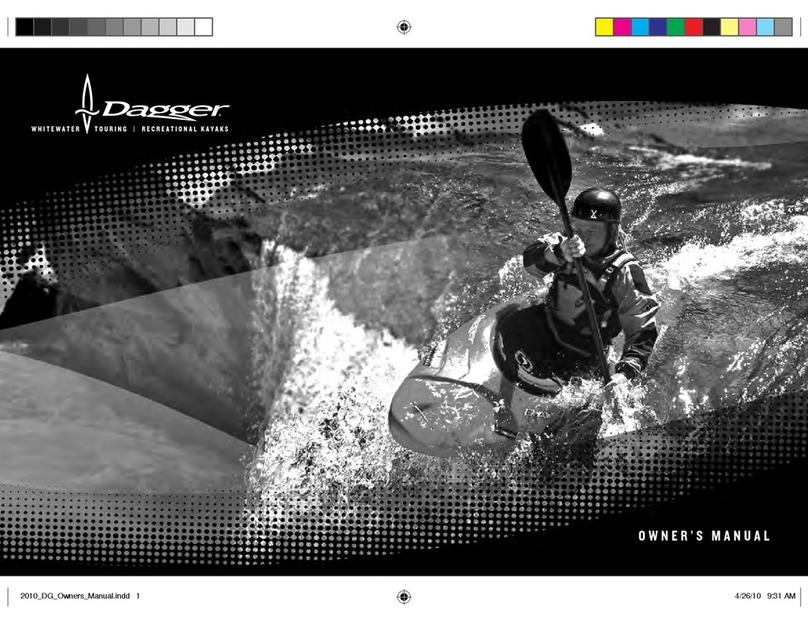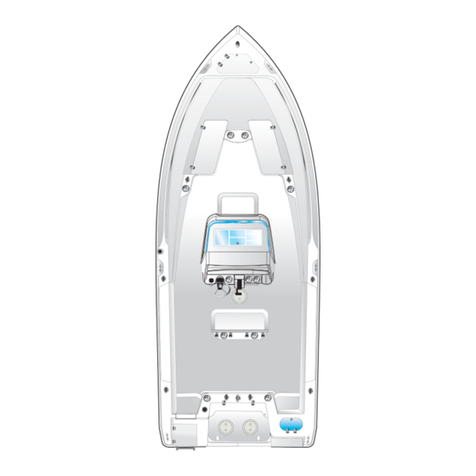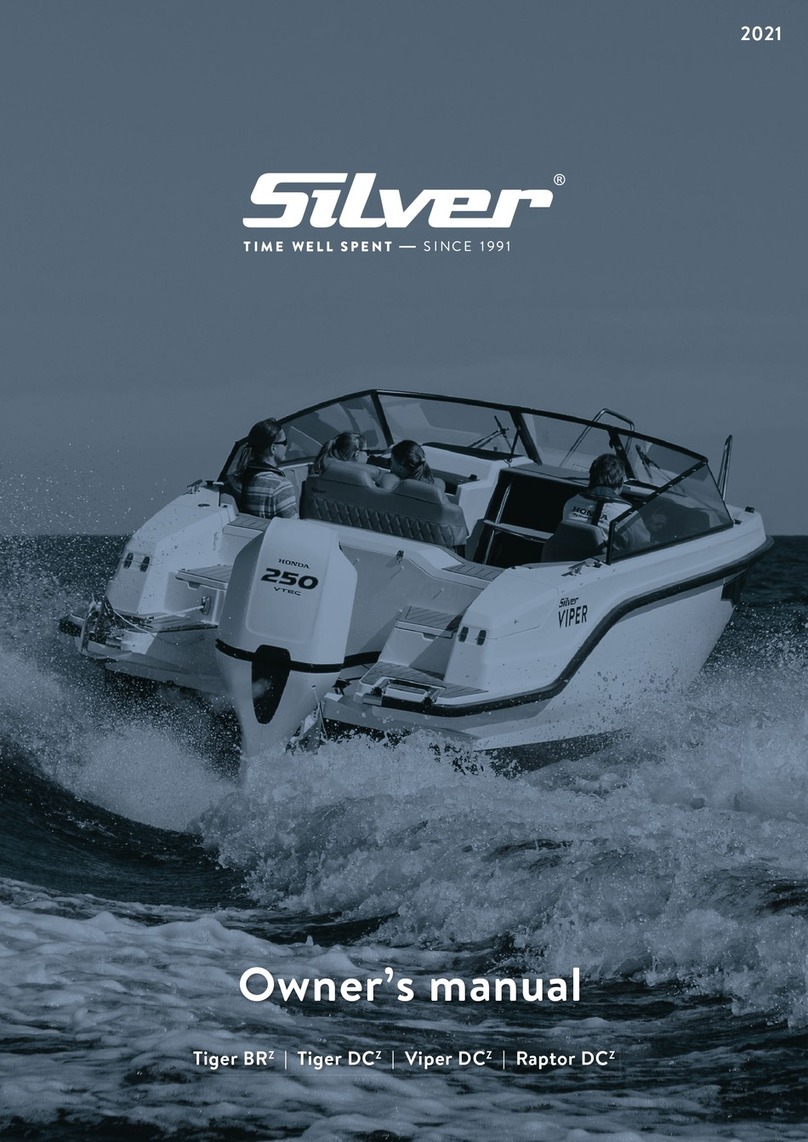Erie LOCKMASTER User manual

1125 Marina Parkway
Macedon, NY 14502
P 315.986.3011
U eriecanaladventures.com
LOCKMASTER HIREBOAT USER’S MANUAL
This manual is a reference for the operation of your vessel. Although you will be given thorough instructions
on board when you arrive, it is a good idea to look this over ahead of time. There also will be a copy on board
your vessel. This manual is intended to show that our Lockmasters are very user-friendly.
Engine Room - This is located under the aft deck. You will notice how clean the engine room is. This is a way
to spot trouble. An oil or coolant leak or rubber dust from a weak fan belt can send a message before trouble
becomes a problem. If you see oil in the engine room bilge, contact Mid-Lakes immediately. Before starting the
engine each morning it is very important to lift the engine hatch and take a look inside for any such message.
Coolant - Check the coolant level by looking at the plastic expansion tank located on the forward bulkhead in
the engine room. If coolant is not visible in the tank, or if it is full, contact Mid-Lakes for instructions.
Strainer – There is a strainer that catches debris in the cooling water and occasionally needs cleaning. You
should be able to see a flow of water through the strainer. If the overboard discharge of cooling water
diminishes or stops, call Mid-Lakes for instructions. Careful disassembly and reassembly are needed to
prevent severe engine damage.

1125 Marina Parkway
Macedon, NY 14502
P 315.986.3011
U eriecanaladventures.com
Ship’s Batteries - There are two sets of batteries in the engine room. The set of batteries grouped together runs
the services such as pumps, refrigerator, and lights. These are the “house” batteries. They are normally charged
by the engine during your cruising. If shore power is not available you will need to charge the house batteries
in the evening and morning. Simply run the engine at @1200 RPMs for about twenty minutes. Plug into
shore power whenever possible to maintain optimum battery condition.
The single battery is for starting the engine. This battery is charged by an alternator separate from the “house “
batteries.
Inverter/Charger - Shore Power - The inverter provides household 120 Volt AC power from the “house”
batteries. The control panel is just inside the aft hatch on the electric panel. The inverter allows the use of small
appliances such as radios, electric razors, small TVs, laptop, cell phone charger. Outlets are generally located
near the sinks.
The inverter needs to be “on” in order to supply household power when NOT plugged into shore power.
Inverter use results in a relatively rapid “house” battery discharge if the engine isn’t running AND shore
power isn’t connected.
In order for the inverter/charger to charge your “house” batteries, the shore power cable must be plugged into an
electrical source on shore. The “AC Input” light on the inverter panel illuminates when shore power is
successfully connected (this may take 7-12 seconds to register).
Plug into shore power whenever possible to maintain optimum battery condition.
The inverter control panel allows you to monitor battery voltage. Proper DC Volts should range from @
11.5-14.5 volts. If DC Volts falls below 11.5, plug into shore power. If unavailable, run engine for 20-30
minutes. If DC Volts is below 11.0 with either shore power connected or the engine running, turn inverter “off”
and call Mid-Lakes.

1125 Marina Parkway
Macedon, NY 14502
P 315.986.3011
U eriecanaladventures.com
Helm and Instrument Panel - These are located on the aft deck. The throttle/shift lever, bow thruster
controls, horn and engine shut-off cable are located on the helmstand. Starting key, gauges, warning lights and
instrument lights are located on the instrument panel.
Starting Key - The key is on the instrument panel. Before starting the engine be sure the shift lever is in
neutral and engine stop cable is down. Turn starting key to the right until engine starts. Then release key. (Just
like starting a car.)
Be sure to check for cooling water flow, check gauges, and be sure propeller is clear of mooring lines which
should be safely stored on deck, prior to getting under way. When not in use, hang engine key back on its hook
to the right of the front door.
Engine Stop Cable - The cable is located on top of the helmstand. To stop the engine, pull up the engine stop
cable. When engine stops push cable down again. Wait for the engine alarm to sound before turning off key.
Never turn off key while engine is running .
Throttle/Shift - lever is located on top or side of the helmstand and functions as both throttle and shifting lever.
Push the lever forward until you feel a click. This will engage the engine in forward gear at idle speed. Pushing
the lever further forward will increase speed. In the same manner pulling it back will put the engine in reverse
gear.

1125 Marina Parkway
Macedon, NY 14502
P 315.986.3011
U eriecanaladventures.com
Never slam the shift lever from full forward gear into reverse gear. Always pause in neutral. You must
allow the drive shaft to stop spinning before changing direction. To rev the engine, pull the shift lever out
sideways(on top-mounted levers) to disengage the transmission and move it forward or backward. On
side-mounted levers pull out the neutral knob located immediately below the lever. You will need to rev the
engine to recharge boat batteries.
Bow Thruster The bow thruster or bow prop is a propeller located in the bow of the boat used to aid in
maneuvering the boat during lockings and dockings. The controls for the bow thruster are on the helmstand.
Like the gear shift lever, it must pause before changing the direction of the prop. The use of this wonderful
accessory will be fully explained in your onboard instruction.
Propane - The tanks are located in a ventilated locker under the captain’s bench. The propane monitor and
control panel is located on the electric panel just inside the aft cabin. This is used to turn on the flow of propane
to your appliances (hot water, furnace, and stove/oven). Press the “valve on/off” button. A green light will glow
when the system is on.
Propane sensors detect the presence of propane. If the alarm beeps rapidly, immediately extinguish all open
flames, cigarettes, etc.
The alarm will also “chirp” every few seconds when “house” batteries are low. The chirp will sound like a
home smoke detector when the batteries are low. Please do not confuse the chirp sound with the alarm
indicating the presence of propane. They are very different sounds. When you hear a chirping sound, charge
the “house” batteries (see Inverter/Charger - Shore Power and Ship’s Batteries sections above).

1125 Marina Parkway
Macedon, NY 14502
P 315.986.3011
U eriecanaladventures.com
Low “house” battery condition or an alarm activation will automatically turn propane off. To use gas
fired appliances turn propane system “on” again.
Fuse Panel - Two fuse panels are on the electric panel just inside the aft hatch on the left. Located on the fuse
panel are switches for cabin lights, running lights, pumps, hot water heater, furnace, etc. Spare fuses are kept in
the tool kit (see below). Always use the same amp fuse as the blown fuse.
Safety Equipment - We strive to keep all safety equipment in good working order and readily available.
Please let us know right away if a safety item is not working properly. It is our goal to keep our vessels
problem-free so your vacation will be as safe and enjoyable as possible. If you have any question regarding any
safety equipment on board please call us.
Fire extinguishers - Each Lockmaster hireboat has adequate fire extinguishers on board located in the galley
area and each stateroom section. They are mounted on the walls and can be removed by unsnapping the strap.
To operate, squeeze the handles together and aim nozzle towards the base of the fire.
Smoke Detector - The smoke detector is located on the ceiling in the aft cabin area. It has been known to go
off while cooking. A spare battery is in the toolkit.
Life Ring - A Type IV throwable PFD is on the back deck.

1125 Marina Parkway
Macedon, NY 14502
P 315.986.3011
U eriecanaladventures.com
Life Jackets - Life jackets (PFDs) are stored under the forward benches on the right side.
Distress Flares – Flares and distress flag are located in a hanging locker area.
Flashlight – A flashlight is aboard each vessel with extra batteries provided in the toolkit.
First Aid Kit - There is a first aid kit on each boat.
Tool Kit - A very limited kit is kept aboard each boat. Spare batteries and fuses are found in the tool kit.
VHF Marine Radio - A radio is located in the cabin near the aft hatch or at the helmstand. This radio can be
used to request passage under lift bridges and through locks. NYS canal structures monitor VHF channel 13.
Example: Press the “push to talk” button and say clearly “Lock 1, Lock 1, Lock 1, this is the vessel Skaneateles
II requesting passage eastbound.”
Then release the button and wait a few minutes for a reply. If you do not get a reply, try again. If still no
answer, try three horn blasts. Please be patient.
If you still get no response, tie up along the lock wall and walk up to the lockhouse. Often the lock operators
are mowing the grounds or painting outside and cannot hear the radio or horn blasts. The radio is not a toy
FCC rules are enforced.
Ground Tackle - Your anchor is located under the forward most hatch in the bow. Be sure the anchor is tied to
the boat before lowering it over the side. Use good judgment choosing your anchorages. While at anchor or
tied, turn off engine before allowing a swimmer in the water near the boat.
Water Hose - The water is used for filling your fresh water tank and is located in one of the bow hatches. The
water fill is in the bow area also. The key for the cap hangs on a hook just inside the galley (under the bell).
Let some water run through the hose before filling the tank to clear the hose of any rubber taste.

1125 Marina Parkway
Macedon, NY 14502
P 315.986.3011
U eriecanaladventures.com
Decks are very slippery when wet.
Marine Toilet - The toilet or “head” takes only waste and toilet paper . (All other tissues, paper and
hygiene products should be disposed in garbage or other suitable containers.) Push down pedal to flush bowl
and be sure pedal releases and stops flushing before leaving.
Marine Shower – There are hot/cold valves that control the water temperature as well as an on/off valve in the
shower head. The shower basin drains to a sump that is then pumped overboard. Periodic inspection of the sump
(under the deck) verifies that the pump is working properly.
Docking and Locking While waiting for a lock to open or bridge to go up, allow plenty of room for outbound
vessels. When attempting a locking or docking maneuver always use prudent judgment and slow speed. Power
and speed do not correct for poor judgment . However, a slow approach can always allow you to stop the
boat and start your maneuver again. Never attempt to fend off the boat with your feet or hands. Always keep
feet and hands clear of the sides when approaching a dock or lock.
Never, ever, tie the boat while in a lock . Instead, use the lines provided along the lock wall to hold onto, or
with a short line, take a “wrap-around” a cable or ladder to keep the boat next to the lock wall.
Keys - When not in use, the engine key and front door key should be left hanging on a hook next to the front
door. To lock up the boat start at the stern hatch and work your way to the front door using the front door key to
lock yourself out. The engine key is on a separate ring and should never leave the boat.
Safe boating requires safe judgment. While we put a great amount of thought and effort into
providing you with a safe and comfortable vessel, you are the one who is responsible to your
passengers and your own safety.
One last suggestion . . . remember, you will be on a boat that moves. There are many things to hang
onto but be sure they are part of the boat and not that lunch basket you set on the roof. More than
one boater has gone overboard clutching the boat hook and some have tossed the anchor overboard
with no line tied to it.
HAPPY CANALLING!
Table of contents
Popular Boat manuals by other brands

Grady-White Boats
Grady-White Boats BIMINI 306 owner's manual

Chaparral
Chaparral SSI 236 Owner's/operator's manual
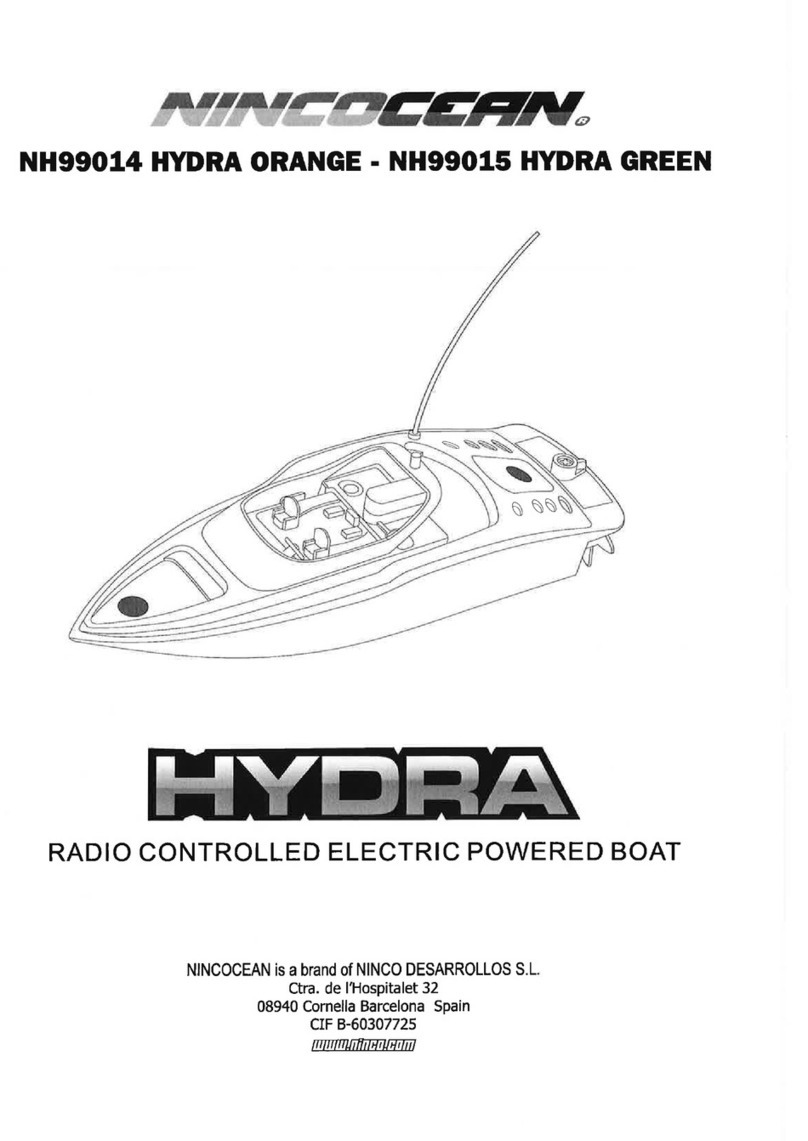
NincoOcean
NincoOcean Hydra NH99014 owner's manual
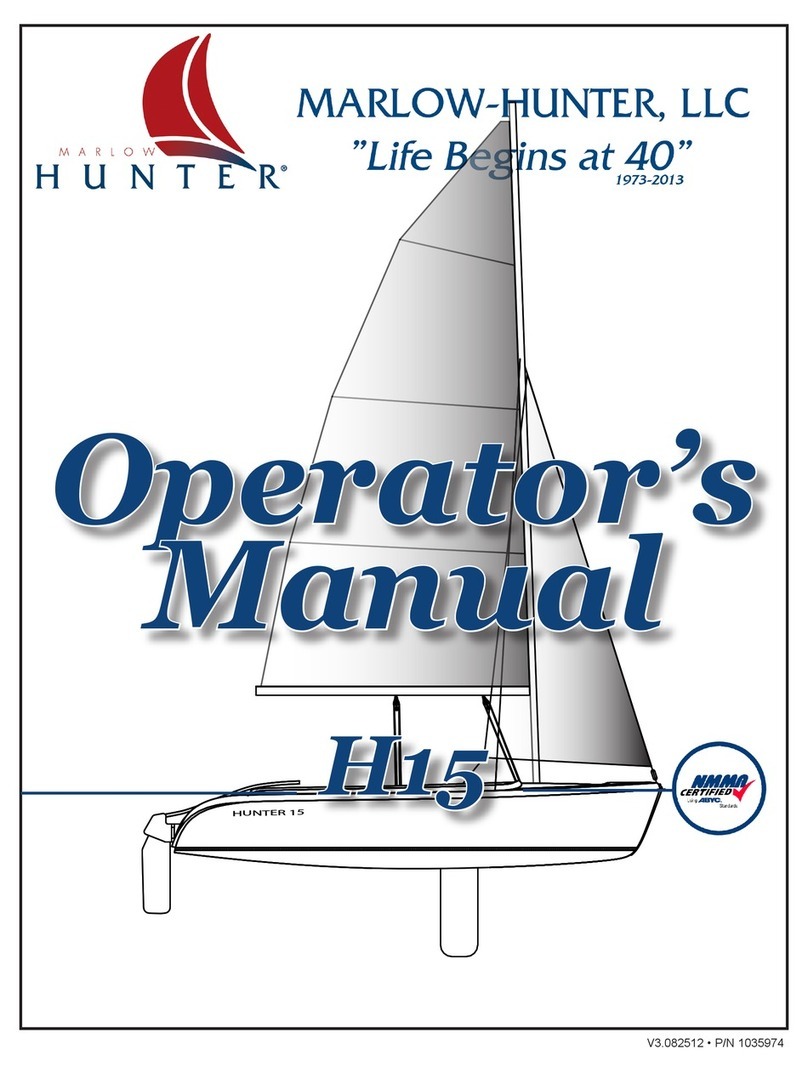
MARLOW-HUNTER
MARLOW-HUNTER H15 Operator's manual
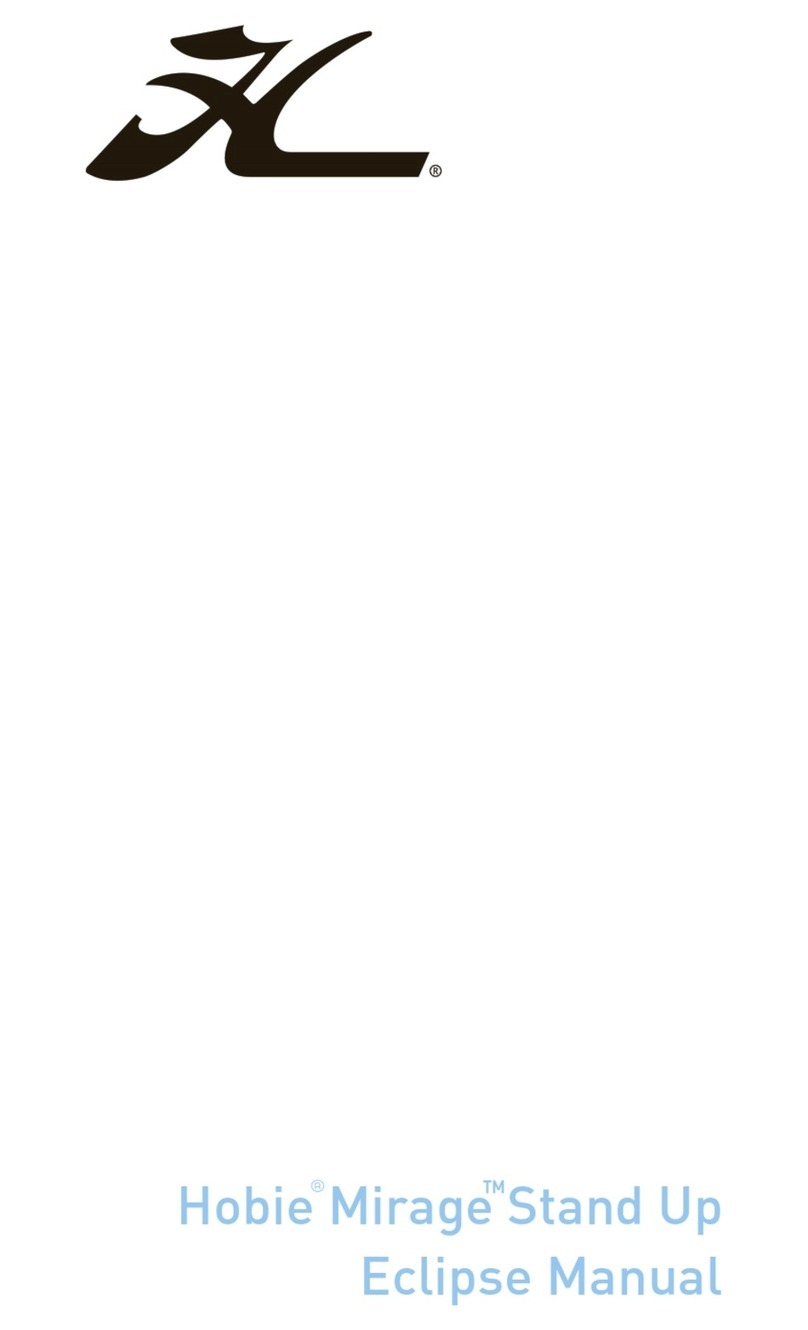
Hobie
Hobie Mirage Eclipse 10.5 user manual
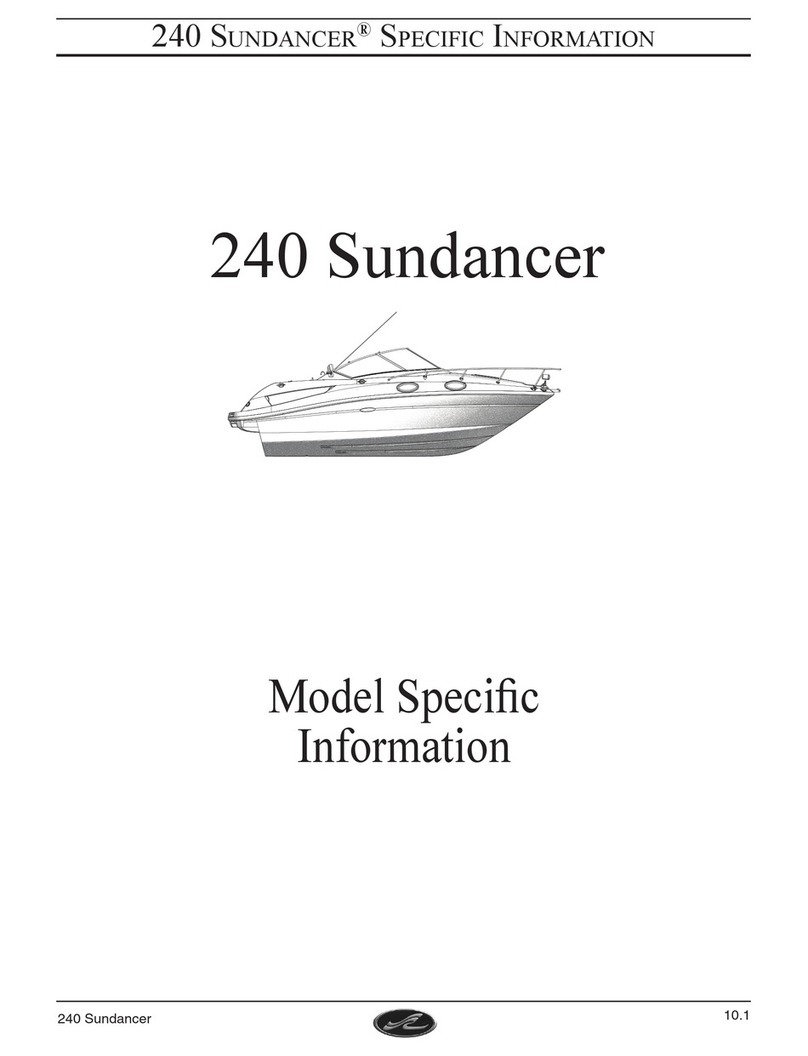
Sea Ray
Sea Ray 240 Sundancer Specific information

Sea Ray Boats
Sea Ray Boats 185 Bow Rider Supplemental owner's manual
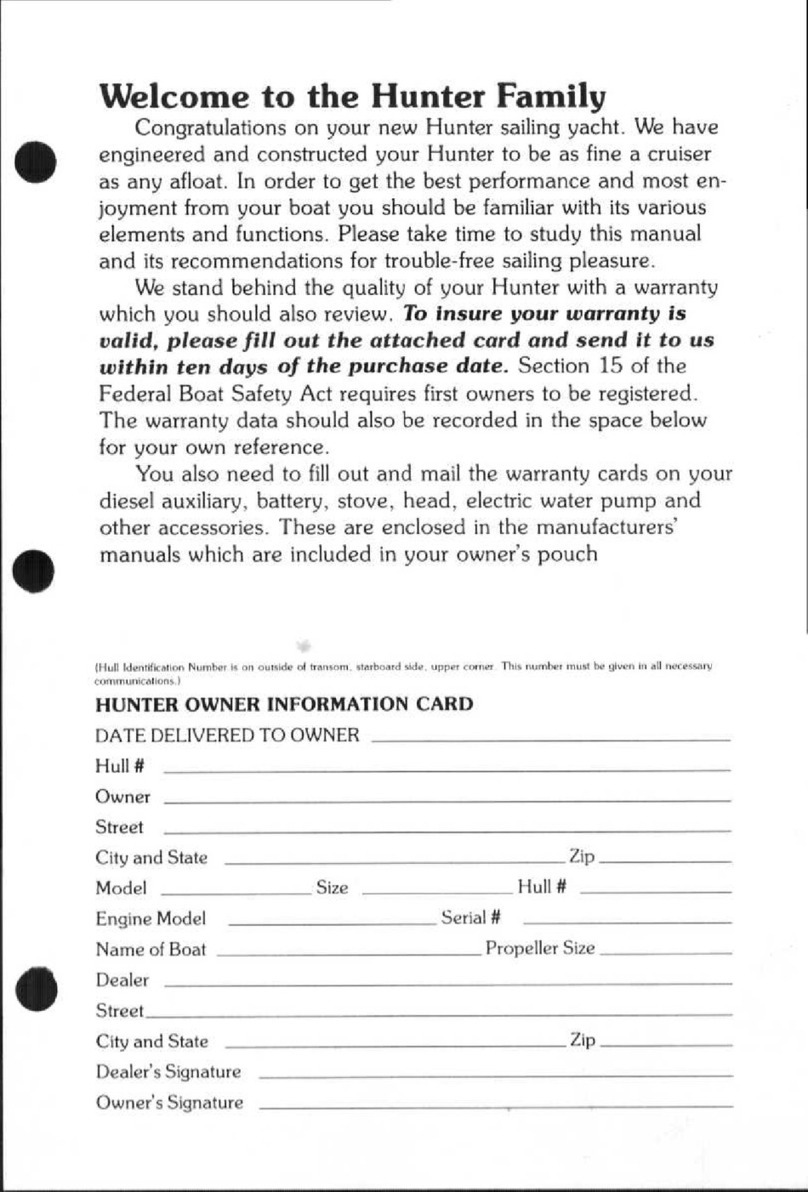
Hunter
Hunter 28.5 manual

Prestige
Prestige 350 owner's manual
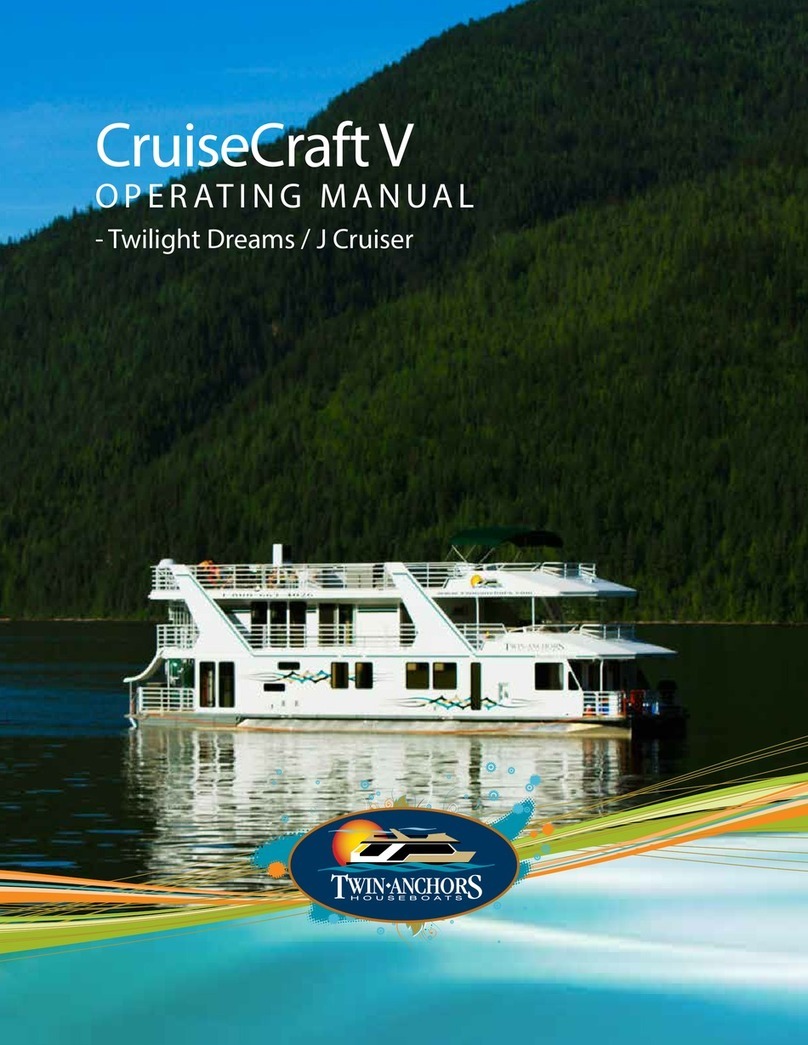
Twin Anchors
Twin Anchors CruiseCraft V Twilight Dreams operating manual

Cumberland
Cumberland Seawind 1160-Destiny Operation manual
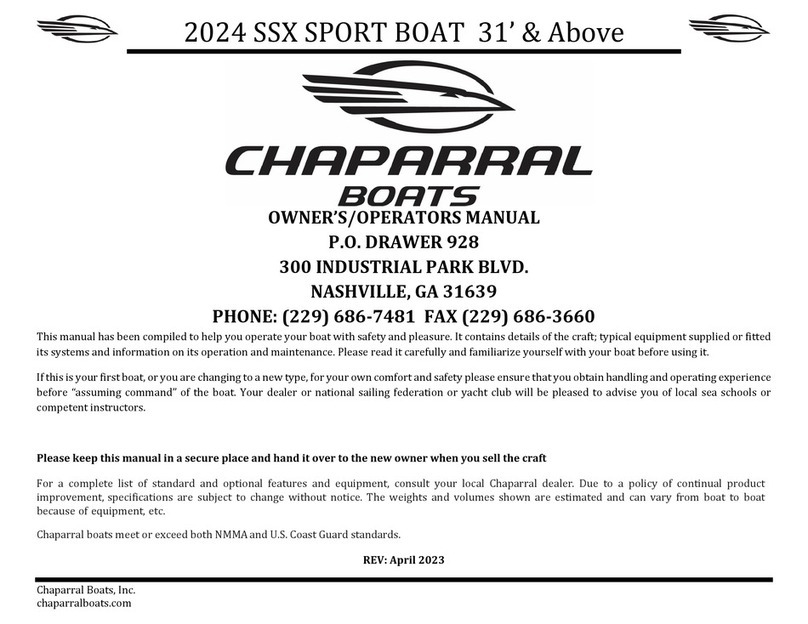
Chaparral
Chaparral 347 SSX 2024 Owner's/operator's manual

